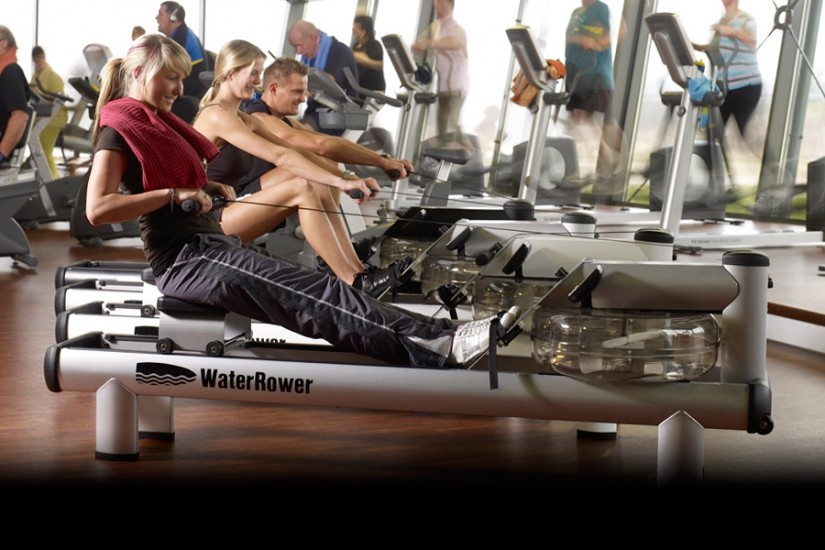24 hours in a day. 60 minutes in an hour. 1440 minutes a day. This couch potato burns a minimum of 1584 calories a day. Probably more like…1728, since I don’t spend all day in bed sleeping. Just blinking my eyes, apparently, is enough to boost my calorie burn to 1.2, 1.3 calories per minute. On days when I work out, I burn about 2400-2650 calories, according to the bodybugg(TM) I wear. My daughter’s violin teachers always told her, “Practice only on the days you eat.” Clearly, if I want to eat, I need to work out – every day I plan to eat!
Research has shown that people who fidget lose more weight than those who are calm and still throughout the day. Looking at the data uploaded from my bodybugg(TM), I wonder what brilliant yahoo came up with the idea of doing a full blown study on rats, rather than just hooking a few hundred people up to this device and saying to half of them, “Go forth and fidget.” I boost my calorie burn rate by .1 to .4 just rolling over in bed, for heaven’s sake.
But here’s the sad and disappointing news: The calorie burn rate achieved during a workout session really doesn’t last, at least for those of us who are not particularly inclined, by nature, to fidget. Not at all. I know we all want to believe – to fantasize – that a good workout boosts our sluggish metabolisms by a few calories an hour, and that the effect lasts until the next day. The sad truth is, in the hour following this morning’s Boot Camp at 24 Hour Fitness, I burned about 25 calories more than I did during the hour before I woke up. I attribute those extra calories to driving, talking, walking, and carrying my gym bag.
The good news: Merely standing up, preparing lunch, burned almost 100 calories more per hour!
Is your job making you fat? No doubt my job isn’t helping me to lose weight; I sit at a desk most of the day, using a PC. If you work at a sedentary job, you’ve got eight hours of professional couch-potato-time to contend with. So what can we do about it?
1. Brown bag it and exercise during lunch. This helps in three ways: First, you control the calories and portion sizes. Pack your lunch the night before, or after breakfast when you’re not hungry. Second, you get up and get active. Don’t just wolf down that sandwich at your desk – get up and move. Go to the gym if there’s one nearby and do at least 20-30 minutes of brisk cardio. Take a walk around the block or around the office building. Third, you save money, since eating out every day – even eating at the corporate cafeteria – gets expensive.
2. Park farther away from the entrance. Even short walks add up. This guarantees you one in the morning and one in the evening. If it’s sunny in the morning and raining when you leave, you might even get in a good run!
3. Take the stairs. This seems obvious, but elevators are convenient and…well, isn’t work enough work? No. Take the stairs. If you work on the ground floor, add a few flights of stairs to your lunch time walk.
4. Sit, stand, fidget. Try to work in a few squats each time you sit or stand during the day. Or raise up on your toes ten times, each time you stand. Do a few push-ups off the edge of your desk or against a wall, or a few triceps dips on a guest chair (don’t try this on a chair with wheels, whatever you do, or you’ll fall flat on your patootie). Use every errand or bathroom break as a signal to get in a little exercise.
5. Work out after work. Take the gym bag with you and stop off at the gym on the way home. If you go home first, odds are you’ll want to kick off your shoes, relax, and stay put. Instead, try working up a sweat first, so you can go home, hit the showers, change, and really relax – guilt free.
6. Do crunches or leg lifts while watching TV. No TV for you unless some part of you is in constant motion! (And don’t tell me your arm is in constant motion as it ferries popcorn from the bowl to your mouth. I tried that one. I’ll give you the same looks I got.)
7. Track every bite of food that goes into your mouth. Don’t tell me it’s “too tedious.” I know. Don’t tell me it’s inconvenient to remember. I know. Just do it. Because every one of us who have done it religiously, day in, day out, will tell you that honestly logging every calorie IN is almost as important to boosting the calories out, if the goal is losing weight. If you want to lose a pound a week, you have to have a deficit of about 3500 calories a week. If you want to lose two, then you have to have a deficit of about 7000 calories in a week. If you want to lose three – consult your doctor first. You don’t want to go below what your body needs, just to sustain vital functions like breathing and circulation. Drink plenty of water, aim to pack as much nutritional punch as you can into every calorie consumed, and take a multivitamin.




